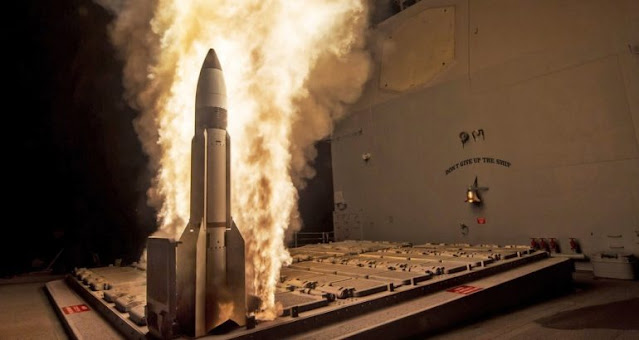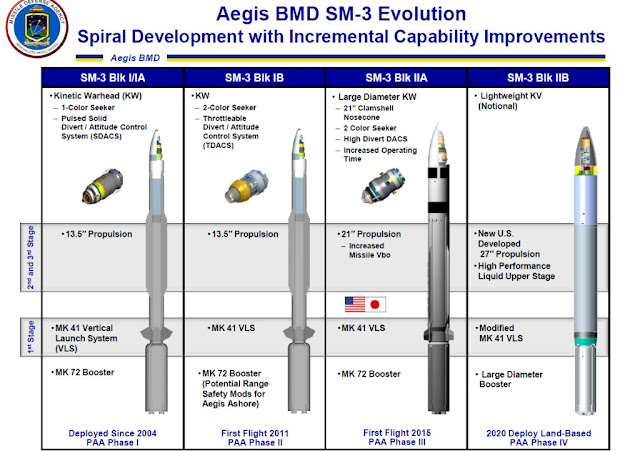As part of a historic Missile Defense Agency (MDA) demonstration and for the first time ever, an intercontinental ballistic missile target was intercepted and destroyed outside Earth's atmosphere by an advanced SM-3® Block IIA ballistic missile defense interceptor made by Raytheon Missiles & Defense, a Raytheon Technologies business. The interceptor was co-developed with Japan's Mitsubishi Heavy Industries.
"This first-of-its-kind test shows that our nation has a viable option for a new layer of defense against long-range threats," said Bryan Rosselli, vice president of Strategic Missile Defense at Raytheon Missiles & Defense. The interceptor uses sheer force, rather than an explosive warhead, to destroy its target. Its “kill vehicle” hits threats with the force of a 10-ton truck traveling 600 mph. This technique, referred to as “hit-to-kill,” has been likened to intercepting a bullet with another bullet

Image Attribute: A file photo of the SM-3® Block IB launch from a US Navy cruiser. / Source: Missile Defense Agency (MDA)
The SM-3 family of ballistic missile defense interceptors has executed more exo-atmospheric intercepts than all other missiles combined and is the only weapon of its kind employed from both ships and land. Kindly note; to date, it has achieved more than 30 exoatmospheric intercepts against ballistic missile targets.
Raytheon Intelligence & Space sensors were also part of the historic test from low-earth orbit. The sensors detected and tracked the target and relayed the data to decision-makers in a demonstration of space-based early warning.
In December 2019, the MDA awarded Raytheon a $1 billion SM-3 Block IIA contract. Earlier that year, the U.S. State Department approved a possible Foreign Military Sale to Japan of up to 73 SM-3 Block IIA missiles for an estimated cost of $3.295 billion. In Japan, the missile will equip the AEGIS Ashore and new Maya-class destroyers.


 www.indrastra.com
www.indrastra.com
"This first-of-its-kind test shows that our nation has a viable option for a new layer of defense against long-range threats," said Bryan Rosselli, vice president of Strategic Missile Defense at Raytheon Missiles & Defense. The interceptor uses sheer force, rather than an explosive warhead, to destroy its target. Its “kill vehicle” hits threats with the force of a 10-ton truck traveling 600 mph. This technique, referred to as “hit-to-kill,” has been likened to intercepting a bullet with another bullet

Image Attribute: A file photo of the SM-3® Block IB launch from a US Navy cruiser. / Source: Missile Defense Agency (MDA)
The SM-3 family of ballistic missile defense interceptors has executed more exo-atmospheric intercepts than all other missiles combined and is the only weapon of its kind employed from both ships and land. Kindly note; to date, it has achieved more than 30 exoatmospheric intercepts against ballistic missile targets.
Raytheon Intelligence & Space sensors were also part of the historic test from low-earth orbit. The sensors detected and tracked the target and relayed the data to decision-makers in a demonstration of space-based early warning.
In December 2019, the MDA awarded Raytheon a $1 billion SM-3 Block IIA contract. Earlier that year, the U.S. State Department approved a possible Foreign Military Sale to Japan of up to 73 SM-3 Block IIA missiles for an estimated cost of $3.295 billion. In Japan, the missile will equip the AEGIS Ashore and new Maya-class destroyers.


SM-3® Block IIA Intercepts ICBM Target Outside Earth's Atmosphere
To date, it has achieved more than 30 exoatmospheric intercepts against ballistic missile targets.



